For George Livissianis, good design is more than just aesthetics; it’s about creativity, personality and functionality. Winner of The Shopping Space category at the 2019 INDE.Awards, presented by PGH Bricks & Pavers, George shares the process behind the genderless salon of Usfin Atelier.
Noticeable in George Livissianis’ design for Usfin Atelier is its monochromatic colour palette married with a touch of sophistication and softness in texture. The space, situated in a former warehouse, elevates the hair salon experience through design that pushes the boundaries, helping the individual transcend into the heart of the Usfin Atelier brand. Inspiring, authentic and immersive, we talk with Livissianis about his creative process.

George Livissianis: The brief was very much about Daniel Jianing, the owner, and what he envisioned for Usfin Atelier. The expansive size of the venue contributed to the idea of creating a flexible space that could adapt and change depending on the requirement. Daniel also wanted to use it as an educational facility for talking to groups of people about hairstyling, therefore it had to have that element of flexibility and versatility to it. Daniel is also a little avant-garde and wanted us to work around concepts like ‘futuristic’ ‘minimal’ and ‘mobile’.
A unique space has the power to resonate with you and there’s that instinctual response to it when you initially walk inside. The beautiful tall ceilings in combination with all that beautiful natural light helped create an atmospheric quality. Those initial responses at the beginning are what suggested where the project might go.

When you arrive in that precinct, you’re greeted by the old brick buildings of the Taubmans factory. As you look for the site, the experience feels akin to a scene in Charlie and the Chocolate Factory, where you get tunnel vision to a very small opening, but once you’re in it, it just opens up. It is a bit of a rabbit warren before you get to the entry door, an arrival space that’s black and low scale. You walk up the narrow staircase and you’re suddenly in this open and naturally-lit warehouse.
You feel the space and you reflect on those first few moments of arriving. It was this process and journey of breaking through the threshold that got me preparing myself for Usfin Atelier. That’s when I started thinking of materiality – clear polycarbonate – making modules that could be wheeled around. Sometimes everything just aligns and you get a space that’s perfect for the brief and that whole idea of flexibility is one of the strongest criteria for where we ended up.

It’s an honest story, one that involved us getting inside Daniel’s mind. I wanted to express his character through the salon’s design. If you met Daniel, you’d think, ‘yes this space makes sense for him.’ You see him and there’s something really creative, avant-garde, and artistic in the way he dresses and the way he is. I think the salon is an outstanding reflection of him. It’s also layered with this functional criteria that triggered the emotional responses from us. So when Daniel said ‘mobile,’ we started thinking of aeroplane trolleys, tapping into the idea of a futuristic picture. That’s materiality, that’s mobile and it’s all woven together.

In all the things that we do, we like to build the palette first. I do like the fact that every brand we work with has its own palette, there are no crossovers. So when Daniel said ‘futuristic,’ we instantly imagined clean and white, stainless steel, glassy, transparency and it just went from there. We had to also factor in functionality issues like – Does it scratch? Does it mark? How do we clean it? We never really had to Google ‘hair salon’ and see what it could look like.
I find that there is no lag between what we do in Australia versus something that gets done in Japan or somewhere in Europe. There’s no ‘behind’ of any sort, just the present and how we move forward. Another thing is that there are so many different directions in where we are with design right now and there’s no singular path to go down. In one sense, everything goes. Culturally, Australia is so diverse and there’s scope to tap into these cultural elements, as long as we can respect where the influence came from.

In my view, you can’t experience a brand online. It is definitely easier to shop from the comfort of your own home, but to truly experience a brand, a physical retail store is a valuable asset. I think it will always go back to that idea of a brand needing a home. I don’t know how the feeling of a store, its atmosphere, tactility and smell translates on to an online persona – because it doesn’t. I don’t know what the future holds, but I like that all of the larger brands that are on top of their game, started in one little humble store making one thing really well. I don’t think that’s ever going to change. That’s where they get their authenticity from and there’s just no substitute for that.
The client, without a shadow of doubt. Clients make our work that much better. It’s also about them coming to the table with a direction and a vision. We can make anything up, but it only makes sense if it relates to the client and their product. It’s not about what the budget is or what the space is, because as an interior designer you should be able to easily address what looks good. It really comes down to that shared collaboration, in understanding who and what they are about and how to best express that.

In a way, it’s all the same – it’s about the ability to go through the creative process and journey. There’s a lot of problem solving involved and to do that with somebody that trusts you to deliver something that’s a big part of them is a unique thing. So in that sense, it doesn’t matter if it’s a door handle or if it’s a hair salon, a food venue or a retail store. Fortunately, I do work with a lot of great people that trust us and it just allows our outcome to be as good as it can be. With Daniel, the brief couldn’t be more aligned with the things that we love doing. Daniel’s taste really played into my strengths because it was right in line with my natural aesthetic in terms of it being minimal, contemporary and spartan.
The most important thing is seeing the brand and the business succeed. With all the amazing people that we work with, a lot of their ideas and visions really allow us to learn. It’s an education for us as well. But in the end, it’s how the audience reacts to a space that makes all the difference. Otherwise, we’ve just created a whole lot of fluff for nothing. And that’s our role, to support and showcase our clients and their unique personality in a creative, inspiring and engaging way.
Catch more projects by George Livissianis here. And join our mailing list for regular design inspiration.
INDESIGN is on instagram
Follow @indesignlive
A searchable and comprehensive guide for specifying leading products and their suppliers
Keep up to date with the latest and greatest from our industry BFF's!
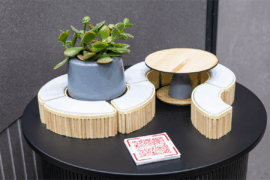
From the spark of an idea on the page to the launch of new pieces in a showroom is a journey every aspiring industrial and furnishing designer imagines making.

In an industry where design intent is often diluted by value management and procurement pressures, Klaro Industrial Design positions manufacturing as a creative ally – allowing commercial interior designers to deliver unique pieces aligned to the project’s original vision.

At the Munarra Centre for Regional Excellence on Yorta Yorta Country in Victoria, ARM Architecture and Milliken use PrintWorks™ technology to translate First Nations narratives into a layered, community-led floorscape.
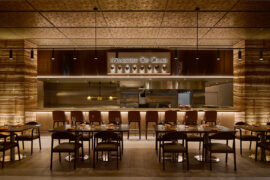
After more than two decades at Architects EAT, Eid Goh launches AIR, a new Melbourne-based studio focused on adaptive reuse, hospitality and human-centred design across commercial and civic projects.
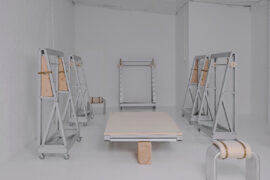
Melbourne-based Studio Edwards has designed Shift+Space, a modular system under the banner of ‘adaptive retail architecture’. Ben Edwards tells us more.
The internet never sleeps! Here's the stuff you might have missed
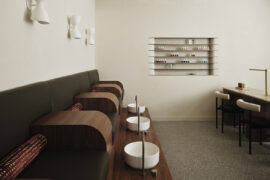
Tom Mark Henry refines a layered design legacy into a softly sculpted retreat in Redfern, where light, tactility and crafted detail define a new expression of restrained luxury.
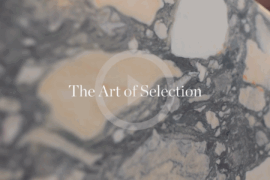
CDK Stone’s Natasha Stengos takes us through its Alexandria Selection Centre, where stone choice becomes a sensory experience – from curated spaces, crafted details and a colour-organised selection floor.
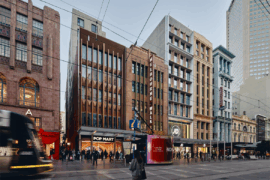
Merging two hotel identities in one landmark development, Hotel Indigo and Holiday Inn Little Collins capture the spirit of Melbourne through Buchan’s narrative-driven design – elevated by GROHE’s signature craftsmanship.